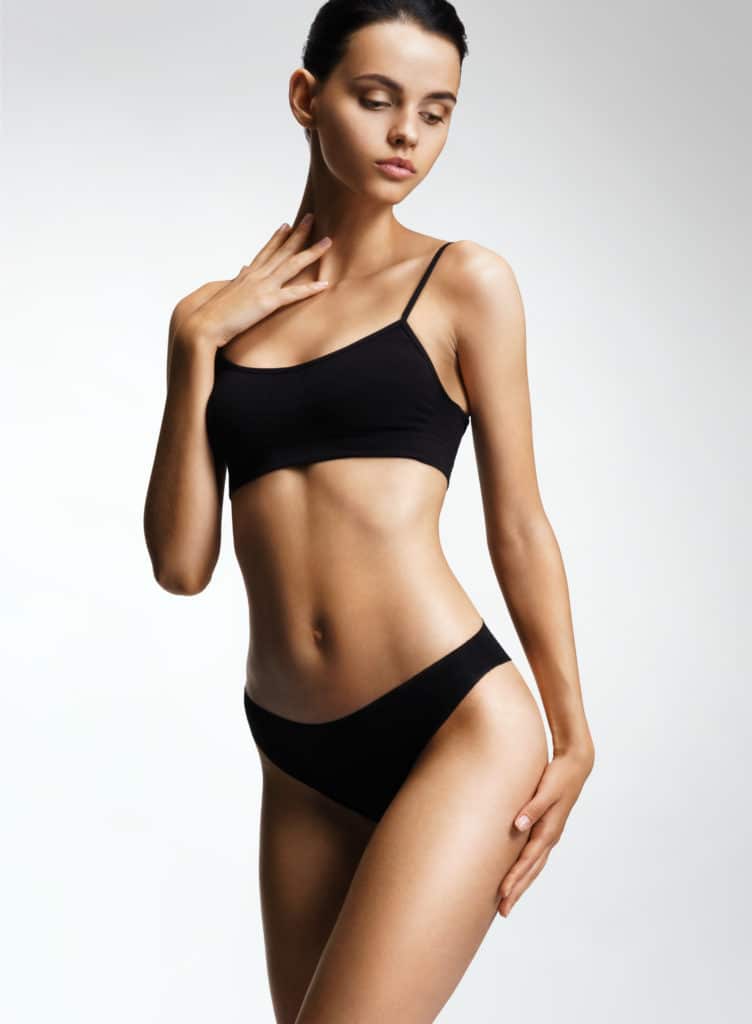Models must meet strict body measurement requirements, particularly in high fashion. That means many aspiring models are constantly asking themselves, ‘how do I get a perfect body?’
The truth? There is no such thing as a perfect body. The modelling industry is notorious for having a potentially damaging mindset about size and body shape.
While the fashion industry definitely has a role to play with people’s confidence and self-image, it’s a model’s responsibility to accept their own limits and learn what they can about maintaining a healthy, happy body.
Read on to discover what it takes to make the best of what you have.
Achieving Perfection
High fashion has strict requirements for body shape and size. It requires you to not only be a certain height, but it also demands that models meet certain body measurements that only 1% of the world’s population is capable of achieving.
Why are so many of us unable to achieve the expectations set forth by the modelling industry? Because no body is built the same. Even if we all ate the exact same things and exercised in the exact same way, we would all still look very different. High fashion models are chosen specifically for their unusual frames. Remember that the high fashion industry wants to appear exclusive – what better way to do that than to work solely with people whose very bodies portray an unrealistic and unachievable expectation for the general population?
Unfortunately, that doesn’t stop hopeful young impressionable models from trying. Many young girls try in vain to meet the standards expected of them by high fashion. Unfortunately, this can lead to unhealthy results.
A model must understand what their unique body is capable of. Top models are blessed with good genes that make them ideal candidates for high fashion – but that’s not the case for everyone. If you don’t meet the height requirements, you can’t force yourself to be taller – so why do so many young models believe they can force their body into a shape that is unnatural and unhealthy for them? Be realistic about what is healthy for you to achieve, and don’t be disheartened if you don’t meet the standards of high fashion; there are still plenty of other opportunities in modelling for you to get involved with.

How to Determine What Niche of Modelling You Fit Into
Let’s take a look at the requirements for each niche of modelling.
High Fashion
As previously mentioned, high fashion is the most difficult and strict niche of modelling to get into. Most people simply do not have the build for it, and no amount of dieting or exercise will change that. Only a fraction of the world could ever meet these expectations.
Female high fashion models must be between 5’8″ and 5’11” tall. They must fit into a UK dress size 6-8 and their bodies must measure close to 34″-24″-34″ bust, waist and hip measurement.
Contrary to what some may believe, your weight is not a factor in modelling. Brands want to know if you fit their clothes, and that is all down to measurements. Remember, too, that muscle weighs more than fat, so the scales can be decieving.
Commercial
Commercial modelling is far more relaxed compared to high fashion. They still prefer models who are relatively tall – those shorter than 5’7″ may find it difficult to find work. A proportional body shape is desired; a size 8-10 is what most brands and agencies look for.
Petite
Petite models are around 5’1” and 5’7″ tall. It is generally preferred that petite models have a proportional shape, ideally hourglass.
Plus-size
Plus-size model requirements differ from brand to brand. High fashion thinks anything above a size 8 is plus-size. Commercial modelling deems anything a size 14 and over as plus-size. There are no set high requirements, but again those over 5’7″ will have an advantage.

How to Get the “Perfect Body”
Compete Against Yourself – Not Other People
Instead of finding what society deems as the perfect body, you should instead focus on being the best version of yourself. We are taught from a young age to compare ourselves to others and compete against them in everything from sports to education. But the healthiest, most effective way to get better is to focus on yourself. Beating your own personal bests is achievable and realistic. If you set your own goals and work to beat them, you will only get better.
Workout
Working out is important for our physical and mental wellbeing – and it’s the best way to stay in shape.
Working out regularly and building some muscle helps to speed up your metabolism, meaning you burn more calories while at rest. That means you can eat slightly more to maintain your weight – great news if you’re a foodie!
Working out is also good for your bones, joints and overall health. It keeps the body strong, but it also helps the mind too. Exercise is proven to help improve overall mood, give us more energy and help to ease the symptoms of mental illnesses like depression and anxiety.
Exercise is also the best way to create lean, toned muscles that modelling agencies and brands love.
Ideally, we should all be doing 150 minutes of cardio each week and 3 weight training sessions. It’s important to try and have a well-rounded exercise routine that you can stick to. Many people go to the gym to get their exercise in, but at-home workouts with no equipment can be just as effective.
If you struggle to find the time to exercise, aim for 3 1-hour sessions each week. Try to include some cardio in there to get your heart rate up and keep your heart strong – HIIT (high-intensity interval training) workouts are an excellent way to do this when you’re starved for time.
When weight training, try to focus on compound movements. These are moves that require lots of different muscles and joints to work several muscle groups at once. Squats, lunges, push-ups and deadlifts are a good example of compound movements. For longer, leaner muscles, use lighter weights and higher reps. Models shouldn’t be aiming to build muscle (unless they are a fitness model). Instead, focus on only building lean muscle mass and toning the overall look of the body.o tone and enhance them.
If you’re new to working out, consider hiring a personal trainer to learn about how to exercise and keep your body in shape.

Focus on Nutrition
Food is the fuel we need to make sure our bodies function properly. We should all be trying to eat at least 5 portions of fruit and vegetables every day to ensure we get the right nutrition. Protein is also very important as this helps our muscles to heal and grow after a workout.
Abs are made in the kitchen. That means, while it’s important to exercise consistently, your diet is the best way to lose fat and become lean. Weight loss can be tricky, so it’s a good idea to talk to a nutritionist or another professional like your doctor for advice on the healthiest way to do it.
You should consume the same amount of calories that you burn off during the day (unless you’re trying to lose weight, in which case you will need to eat less calories than you consume – this is called a calorie deficit). It’s vital you eat a healthy diet. Good nutrition helps prevent bloating, keeps skin clear, helps hair and nails to be strong and healthy, prevents unwanted weight gain, helps muscles to heal, keeps your organs healthy… basically, there are loads of reasons to eat a healthy diet.
Aim for 3 square meals a day and keep plenty of healthy snacks in the house in case you get hungry (fruit is a great option as is a handful of nuts, Greek yoghurt or rice cakes). Try to limit your dairy intake and swap it out for nut milks like almond or rice milk. Limit your complex carbs (white bread, white pasta etc.) and swap them for healthier options like brown rice or cauliflower rice. Eat lots of carbohydrates, particularly veggies (kale, broccoli and spinach are all excellent choices). Don’t forget your protein – chicken, turkey and fish are popular meats for keeping body fat down. Don’t forget to use herbs, salt and pepper to keep everything flavourful and delicious.
Don’t limit yourself entirely. It’s important to allow yourself the chance to enjoy your favourite foods without feeling guilty. The odd cake or piece of chocolate is a luxury you deserve.
Have a Good Skincare Regime
Your skin is the first thing people see, so you should take good care of it. Lots of things affect and speed of the ageing process including the sun, smoking, alcohol, a poor diet and no physical exercise.
To keep your skin looking its best by avoiding breakouts and keeping ageing at bay, you should do the following:
– Avoid smoking and excessive alcohol drinking
– Wear SPF every day
– Use a good cleanser every night (double cleansing to remove make-up or SPF)
– Use a moisturiser that is suitable for your skin type
– Invest in a serum that targets your skin’s key concern (whether that’s acne, fine lines, hyperpigmentation etc)
– Eat healthily. Fatty fish like salmon are good for skin health
– Work out regularly
– Exfoliate regularly to remove dead, dull skin cells
If you can, it is best to consult an expert like a dermatologist to help you come up with a skincare routine that’s perfect for you.
Don’t neglect the skin on your body, too. Exfoliate it regularly and follow up with a moisturiser straight out the shower. Use fake tan for a natural glow rather than using sunbeds to avoid skin damage. Women should also try to remove all their body hair by waxing or shaving as brands and agencies generally prefer hair-free models.

Don’t Neglect Your Mental Health
Your mental health is just as important as your physical health. If you don’t take care of your mind, navigating the modelling industry can be an overwhelming experience. Models must also be mentally strong enough to cope with rejection – a very common part of the job. Social media also means public figures such as models face more scrutiny and negativity than ever before.
You need to know the best ways to keep your mind healthy. This can differ from person to person, but the following should help:
– Meditation. Meditating is a great way to learn how to have more control over negative emotions. It’s also good for learning how to be grateful even when things aren’t going your way.
– Get enough sleep. You should be having at least 6 hours of sleep every night.
– Eat. Make time to sit and enjoy your meals. Ensure your diet is well-rounded – a lack of certain nutrients can negatively affect the mind.
– Consider therapy. Therapy isn’t just for when people are struggling – it’s a good place to vent your feeling and learn how to manage your emotions better.
– Work out regularly. Working out is thought to help decrease feelings of anxiety and boost serotonin, the feel-good hormone. You don’t need to do a heavy session each time – a walk in nature can be enough to boost your spirits.

